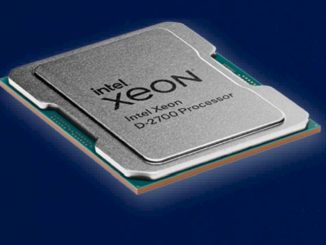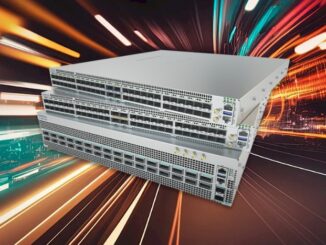
The high performance computing market might get some windfall from the processing requirements of IoT and edge devices, but the real driver for spending will come well before the device ever hits the market.
The rise in IoT and edge device demand means an exponential increase in the number of devices that need to be modeled, simulated and tested and this means greater investment in HPC hardware as well as the engineering software tools that have generally served the HPC set.
In other words, it is not the new, enlarged, complex dataset from IoT and edge that presents the next challenge and opportunity for HPC—it is the design and simulation requirement to “create the creators” of that new onslaught of data.
While the saving grace for the commercial HPC segment was thought to be the “missing middle” of industrial manufacturing users that required more sophisticated systems and tools in enough volume to boost the market, that base just got far wider with the addition of all the new smart device companies that are pushing size, density, power, and other boundaries with their gear.
Before we get too enthusiastic about this potential boon in this more sluggish HPC market, we should point out that the new influx in HPC IT spends will likely not register as high on-premises as it will for cloud-based HPC. When software licensing models for HPC simulation packages became amenable to cloud infrastructure, design and engineering was one of the first commercial HPC sectors to go all or half-in (bursting) to AWS and elsewhere.
On the software side for CAE and CAD, the old guard for computer aided engineering and design tools faces stiff competition in those cloud environments given the too-little-too-late approach these traditional design and engineering companies took to updating their licensing models for cloud customers—a delay that opened the door to a new generation that looked to open source and cloud-native CAE tools.
Many in that next generation of designers and engineers have landed at companies making IoT and sensor-driven devices that require advanced multiphysics modeling—and many of these engineers started their careers in a world without an on-prem requirement.
Consider something like an RF filter for 5G for instance. These are very tiny half-millimeter by millimeter pieces of silicon but companies that design these like Qorvo or Broadcom will create million degrees of freedom models of just that tiny little device in order to understand all the acoustic modes and try to squeeze as much performance out of that filter as possible. So when they’re designing that filter, a lot of HPC horsepower goes into engineering better tiny devices.
Consider as well that this is just one example of many hundreds of thousands in the exploding area that is edge, IoT, sensor, and microdevice engineering.
For example, these high licensing costs for standard engineering packages across HPC systems that needed to deliver ever more performance for much smaller and complex devices sparked OnScale’s Ian Campbell’s notion that HPC as an on-prem and traditional software license constrained environments would not scale for the design of IoT devices.
At his former startup, NextInput, which focused on force sensors for the automotive and industrial IoT market, Cambell says the frustration with the design tools and limited HPC scalability was a major bottleneck—one that he saw extending to any number of other companies that were making products that required true multiphysics solver capabilities that stretched across mechanical and structural domains, non-linear materials, time domains, piezoelectric materials, and so on. While these were available in pieces elsewhere on-prem and in a cloud environment, he says the capabilities were not matching the potential demand due to the rising market.
That market, by the way, extends beyond just IoT devices. Campbell says the increasing need for HPC hardware and design tools will explode in other related areas, including in 5G (RF filters and switching for both devices and base stations), biomedical devices, and autonomous cars. Indeed, the term IoT is loaded and includes everything from smart home systems and assistants, motion and gesture sensors, biometric devices, and the wide range of commercial and industrial sensor systems.
He joined startup OnScale last year, which was spun out of engineering consultancy, Thornton Thomasetti with seed funding of $3 million to bring Thomasetti’s own multiphysics software suites to the cloud and to this emerging base of edge and IoT users of HPC systems. This will be available first on AWS with later transport to Azure and other cloud as well as with support for accelerators like GPUs for instance. It is also possible to deploy the package on-prem and some big OnScale users do so they can better optimize hardware. In their platform, the models are split up over virtual machines running in containers with just enough CPU and RAM to run portions of the model or as a parametric sweep so the models can run in parallel.
But Campbell tells us the real reduction in time and investment comes from cloud-based deployment models especially with the spiking demands of IoT, sensor, edge, and other complex product design cycles. He says the SaaS model of pricing goes beyond what the big engineering software companies have been able to provide.
“I lived through this,” Campbell says referring to their big engineering software package, which was a quarter million dollars at his previous startup and a $100,000 in HPC hardware to design their IoT device.
“When you’re sitting with engineers and they say they need better multiphysics tools to be more competitive and you ask for a budget, first they have to buy the main design package, then buy their server to allow you to host their software on an HPC server internally or in the cloud, then you have to buy your physics modules for heat transfer, acoustics, and other library and tool add-ons and plugins,” Campbell explains. “When you do the math, it ends up at $200-$300k over three years and then you have to figure out where to run the software or select a Rescale or TotalCAE which are based on existing public clouds but make it easier to host your license and you end up paying per core hour so it is not without cost either.”
The OnScale model delivers as a SaaS based subscription by core hour bundles that include the software and hardware. This pricing is not yet public but should be later this month.
Using estimates (as high as they may seem) from Hyperion (formerly IDC’s HPC research arm) projecting that $10 billion will be spent annually on CAE software and HPC hardware platforms, Campbell says if you take the $33 billion in HPC hardware and what people are using those systems to do we see plenty of AI and machine learning driving newer purchase of HPC systems but historically a big portion of that market has actually been going to companies that are engineering these devices already. “None of the big companies like Broadcom or Qorvo or those doing this at scale will give up their on-prem HPC, but if we can build out this cloud HPC platform we can make that capability available to other companies that could not afford to go buy five or ten million dollars of HPC hardware. So we’re making smaller companies that need HPC competitive.”
We have been hearing this idea that the cloud is a gamechanger for the smaller HPC startups for years now and there are indeed many examples where this plays out. But what is new and unique about OnScale is about how it has targeted an opportunity that mainstream HPC has largely overlooked.
While much of the attention for IoT in HPC has focused on some slim use cases of data processing at large scale or complexity from sensor data streams, in fact, the modeling and simulation opportunity for this entirely new “missing middle” of HPC users could present a big boon to HPC spending.





Be the first to comment